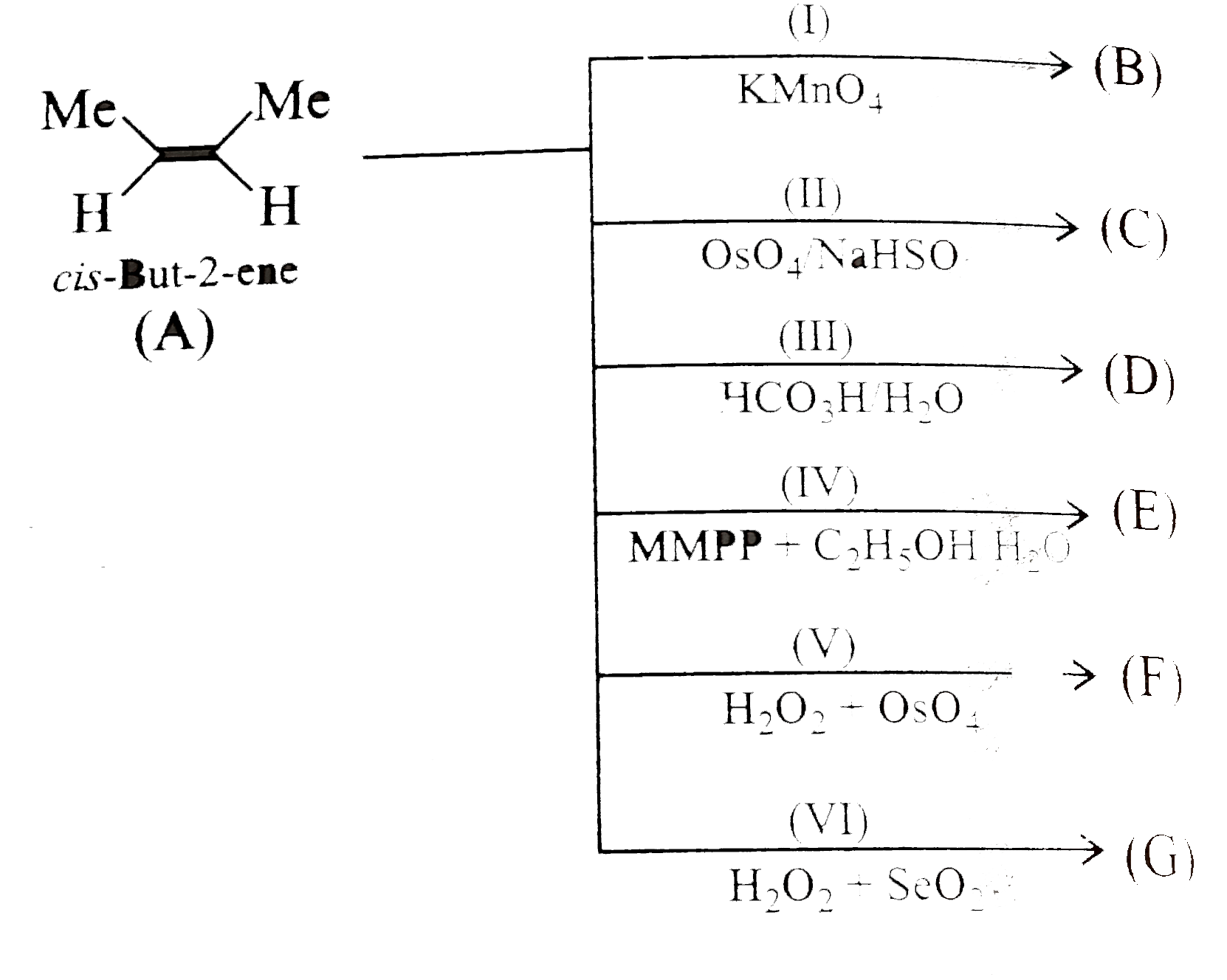Which of the following is/are ture?
For the same solution, elevation in boiling point =depression in freezing point.
The Van't Hoff factor for a dilute solution of BaCl2 is 3.
The elevation in boiling point is due to increase in vapour pressure.
The depression in freezing point is due to decrease in vapour pressure.
The correct Answer is:B, D
To determine which of the given statements are true, let's analyze each option step by step.
Step 1: Analyze Option A
Statement: For the same solution, elevation in boiling point equals depression in freezing point.
Explanation:
- The elevation in boiling point (ΔTB) and depression in freezing point (ΔTF) can be expressed as:
ΔTB=i⋅KB⋅m
ΔTF=i⋅KF⋅m
- Here, i is the van 't Hoff factor, KB is the ebullioscopic constant, KF is the cryoscopic constant, and m is the molality of the solution.
- For the same solution, since i, KB, and KF are constants, we can conclude that ΔTB can be equal to ΔTF under certain conditions. Thus, this statement is true.
Step 2: Analyze Option B
Statement: The van 't Hoff factor for a dilute solution of BaCl2 is 3.
Explanation:
- BaCl2 dissociates in solution as follows:
BaCl2→Ba2++2Cl−
- This means one formula unit of BaCl2 produces 3 particles (1 Ba²⁺ and 2 Cl⁻).
- Therefore, the van 't Hoff factor i for BaCl2 is indeed 3. Thus, this statement is true.
Step 3: Analyze Option C
Statement: The elevation in boiling point is due to an increase in vapor pressure.
Explanation:
- The elevation in boiling point occurs because the vapor pressure of the solution is lower than that of the pure solvent. As a result, a higher temperature is required to reach the boiling point.
- Therefore, the statement that the elevation in boiling point is due to an increase in vapor pressure is incorrect. Thus, this statement is false.
Step 4: Analyze Option D
Statement: The depression in freezing point is due to a decrease in vapor pressure.
Explanation:
- The depression in freezing point occurs because the vapor pressure of the solution is lower than that of the pure solvent. This decrease in vapor pressure leads to a lower freezing point.
- Thus, this statement is true.
Conclusion
After analyzing all options:
- True Statements: A, B, and D
- False Statement: C
Final Answer
The true statements are A, B, and D.
---
Statement: For the same solution, elevation in boiling point equals depression in freezing point.
- The elevation in boiling point (ΔTB) and depression in freezing point (ΔTF) can be expressed as:
ΔTB=i⋅KB⋅m
ΔTF=i⋅KF⋅m
- Here, i is the van 't Hoff factor, KB is the ebullioscopic constant, KF is the cryoscopic constant, and m is the molality of the solution.
- For the same solution, since i, KB, and KF are constants, we can conclude that ΔTB can be equal to ΔTF under certain conditions. Thus, this statement is true.
Statement: The van 't Hoff factor for a dilute solution of BaCl2 is 3.
- BaCl2 dissociates in solution as follows:
BaCl2→Ba2++2Cl−
- This means one formula unit of BaCl2 produces 3 particles (1 Ba²⁺ and 2 Cl⁻).
- Therefore, the van 't Hoff factor i for BaCl2 is indeed 3. Thus, this statement is true.
Statement: The elevation in boiling point is due to an increase in vapor pressure.
- The elevation in boiling point occurs because the vapor pressure of the solution is lower than that of the pure solvent. As a result, a higher temperature is required to reach the boiling point.
- Therefore, the statement that the elevation in boiling point is due to an increase in vapor pressure is incorrect. Thus, this statement is false.
Statement: The depression in freezing point is due to a decrease in vapor pressure.
- The depression in freezing point occurs because the vapor pressure of the solution is lower than that of the pure solvent. This decrease in vapor pressure leads to a lower freezing point.
- Thus, this statement is true.
After analyzing all options:
- True Statements: A, B, and D
- False Statement: C
The true statements are A, B, and D.
Topper's Solved these Questions
- SOLUTIONSBOOK - CENGAGE CHEMISTRY ENGLISHCHAPTER - SOLUTIONSEXERCISE - Exercises (Single Correct)
99 Videos
- SOLUTIONSBOOK - CENGAGE CHEMISTRY ENGLISHCHAPTER - SOLUTIONSEXERCISE - Exercise (Assertion-Reasoning)
18 Videos
- SOLUTIONSBOOK - CENGAGE CHEMISTRY ENGLISHCHAPTER - SOLUTIONSEXERCISE - Exercises (Linked Comprehension)
58 Videos
- SOLID STATEBOOK - CENGAGE CHEMISTRY ENGLISHCHAPTER - SOLID STATEEXERCISE - Ex 1.2 (Objective)
9 Videos
- SURFACE CHEMISTRYBOOK - CENGAGE CHEMISTRY ENGLISHCHAPTER - SURFACE CHEMISTRYEXERCISE - Archives Subjective
2 Videos
Similar Questions
If f(x)=[ln(x)e]+[ln(e)x], where [.] denotes greatest interger function, the which of the following are ture ?
View SolutionWhich of the following is/are not the products in the following reaction?

View SolutionWhich of the following is not ture about polymers ?
View SolutionWhich of the following is not a ture statement with respect to Bt cotton?
View SolutionWhich of the following is ture for CO2 concentration ?
View SolutionIf A={1,2,3}, B={4,5,6},C={1,2,3,9,6} then which of the following is not ture?
View SolutionSuppose z and ω are two complex number such that |z+iω|=2. Which of the following is ture about |z| and |ω|?
View SolutionGiven ∣∣px2+qx+r∣∣≤∣∣Px2+Qx+R∣∣∀x∈R and d=q2−4pr>0 and D=Q2−4PR>0
Which of the following must be ture ?
View SolutionIf ax2+bx+c=0,a,b,c∈ R has no real roots, and if c< 0, the which of the following is ture ? (a) a< 0 (b) a + b + c > 0 (c) a+b+c< 0
View SolutionConsider the following reactions :

Which of the following are stereospecific reactions ?
View Solution
